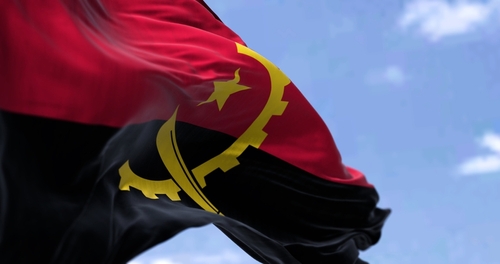Angola Independence Day is a time of immense national pride, marking the country’s sovereignty after centuries of colonial rule. Each year on November 11, Angolans at home and around the world come together to celebrate their freedom, culture, and history. As Angola Independence Day 2025 approaches, this guide provides everything you need to know about this important national holiday.
For many Angolan nationals living abroad, this day is a chance to connect with their heritage and share traditions with their families. It is a time for reflection on the nation’s journey and a celebration of the vibrant culture that defines it. This article explores the history behind the holiday, how it is celebrated, and what it means to the Angolan people.
The Story Behind Angola’s Independence
To appreciate Angola Independence Day, it’s important to understand the country’s long journey to freedom. Angola’s history was shaped by centuries of Portuguese colonial rule, which began in the late 15th century. For nearly 500 years, the region was subjected to the transatlantic slave trade and exploitation of its rich natural resources.
The struggle for independence gained momentum in the mid-20th century. Several nationalist movements emerged, each with the goal of ending colonial control. The three most prominent groups were:
- The Popular Movement for the Liberation of Angola (MPLA)
- The National Front for the Liberation of Angola (FNLA)
- The National Union for the Total Independence of Angola (UNITA)
After years of armed conflict, the turning point came with the Carnation Revolution in Portugal in 1974. This coup overthrew the Portuguese dictatorship and led to the decolonization of its overseas territories. On January 15, 1975, the Alvor Agreement was signed, establishing a transitional government and setting a date for Angola’s independence.
On November 11, 1975, Angola officially became a sovereign nation. Agostinho Neto, leader of the MPLA, was declared the country’s first president. This historic day marked the end of Portuguese rule and the beginning of a new chapter for the Angolan people.
Celebrating Angola Independence Day 2025
Angola Independence Day is a public holiday filled with joy, patriotism, and cultural festivities. While celebrations vary across the country and among diaspora communities, they share common themes of unity and remembrance.
How Angolans Celebrate at Home
In Angola, November 11 is a day of nationwide celebration.
- Official Ceremonies: The capital city, Luanda, hosts official events, including military parades and speeches from government leaders. These ceremonies honor the heroes of the independence struggle and reflect on the nation’s progress.
- Community Gatherings: Across cities and villages, communities come together for street parties, concerts, and cultural performances. Music and dance are central to the celebrations, with styles like semba and kizomba filling the air.
- Family Feasts: Families gather to share traditional meals. Popular dishes often include muamba de galinha (chicken stew), calulu (dried fish and vegetable stew), and funge (a staple porridge made from cassava or corn flour).
How Angolans Abroad Celebrate
For Angolans living in other countries, Independence Day is a vital link to their roots.
- Cultural Events: Diaspora communities often organize cultural events, festivals, and parties. These gatherings feature traditional Angolan music, food, and dance, allowing people to celebrate their heritage together.
- Sharing Traditions: Many use the day as an opportunity to teach younger generations about Angola’s history and culture, ensuring that their heritage is passed down.
- Connecting with Loved Ones: Sending money and gifts back home is a common way for those abroad to participate in the celebrations and support their families in Angola. Services like Remitly make it simple and secure to send funds for holiday feasts and festivities.
The Angolan Flag: A Symbol of Freedom
The Angolan flag is a powerful symbol of the nation’s struggle and identity. It was adopted upon independence in 1975 and consists of two horizontal stripes and a central emblem.
- Red Stripe: The top red stripe represents the bloodshed during the fight for independence.
- Black Stripe: The bottom black stripe symbolizes the African continent.
- Central Emblem: The emblem in the center is composed of a cogwheel, a machete, and a star. The cogwheel signifies industrial workers, the machete represents peasantry and the armed struggle, and the yellow star symbolizes international solidarity and progress.
Plan Your Celebration
Angola Independence Day 2025 is more than just a date on the calendar. It is a heartfelt celebration of freedom, resilience, and the rich cultural tapestry of the Angolan people. Whether you are in Luanda or thousands of miles away, the spirit of this day connects Angolans everywhere.
If you are an Angolan living abroad, celebrating can be a meaningful way to honor your heritage. Consider organizing a gathering with friends, cooking a traditional meal, or sharing stories of Angola with your family. Supporting your loved ones back home with a money transfer is another powerful way to be part of the celebration.
